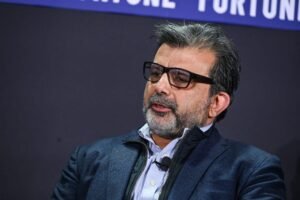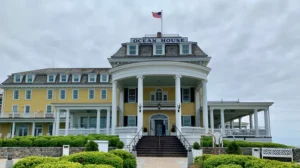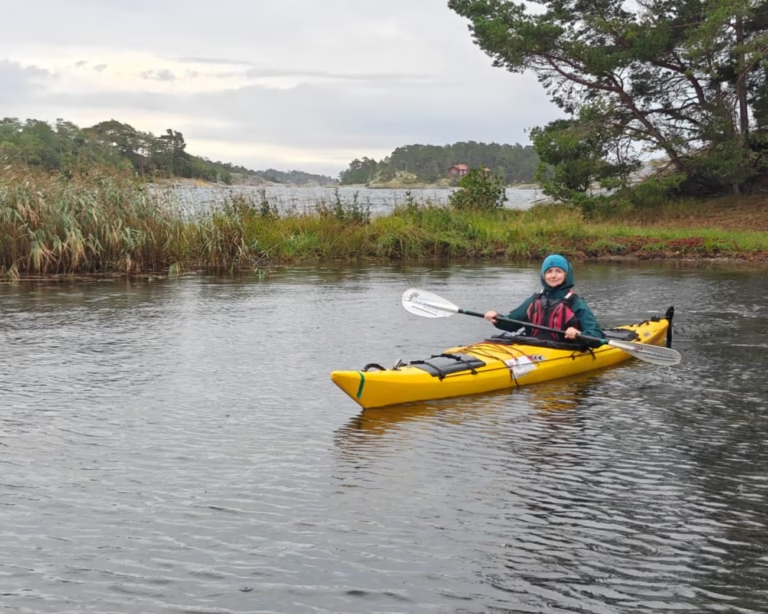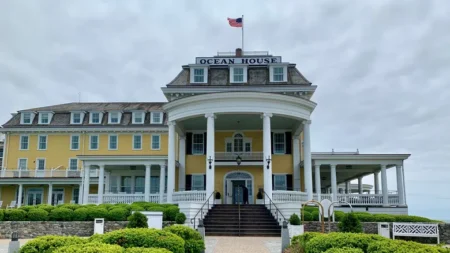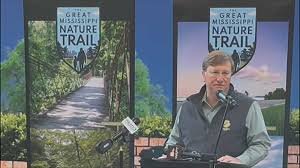Paddling through the deep blue waters of Sweden’s Stockholm archipelago, visitors encounter scattered islands, rocky skerries, and abundant wildlife. Bullerön, a mile-long island with old fishing huts, summer cottages, and wooden jetties, is one of the main highlights of the newly created Nämdöskärgården Marine National Park.
The park, covering 25,000 hectares, is Sweden’s second marine national park and is mostly water, protecting delicate Baltic Sea ecosystems. Approved by the Swedish parliament in June 2025, it coincides with a national ban on bottom trawling in marine protected areas, a fishing method compared to “bulldozing a rainforest.” Sweden is the first European country to introduce such a ban.
Low-impact tourism is central to the park’s mission. Visitors can explore the area while learning about ocean conservation. Sea kayaking is a popular way to experience the archipelago. It allows access to narrow channels and remote islands while leaving minimal impact on the environment.
Guides from local adventure groups lead visitors through calm waters between islands. Trips often begin on uninhabited islands like Jungfruskär, where kayakers carry their vessels over lichen-covered rocks. Routes typically include stops at small islands or overnight stays at forest cabins, offering scenic views of the ocean and untouched nature.
The waters reveal healthy ecosystems. Seagrass meadows shimmer beneath the surface, providing nurseries for young fish and absorbing carbon from the atmosphere. Bladder wrack, or blåstång, supports shellfish and other marine life. Paddlers may spot white-tailed eagles, seals, and pine martens along the way.
Lunch stops on deserted islands highlight local cuisine. Fish stew, fresh from the surrounding waters, is prepared while adhering to leave-no-trace principles. Visitors are encouraged to leave the islands free of litter, reinforcing the park’s environmental values.
Nämdöskärgården emphasizes both conservation and accessibility. The islands host diverse birdlife, including cormorants, gulls, herons, and geese. Seagrass and seaweed forests sustain marine life and indicate healthy waters.
Private islands such as Idöborg offer cabins, seasonal local meals, and sauna experiences. Visitors can relax and immerse themselves in nature without disturbing fragile habitats. The experience allows tourists to connect with the sea and better understand conservation goals.
Longtime visitors notice the decline of fish like cod and perch in recent decades. Many welcome the creation of the marine park as a critical step in protecting fish breeding grounds. Experts argue that such initiatives benefit the Baltic Sea and allow nature to recover.
Low-impact activities like kayaking and hiking encourage enjoyment rather than exploitation of natural resources. Conservationists highlight that experiences in protected areas educate the public, promote stewardship, and support sustainable tourism.
Kayaking across Nämdöskärgården provides a rare chance to explore Sweden’s outer islands. Visitors glide past glistening seagrass meadows, dense forests, and historic cottages. Observation of wildlife and quiet reflection on the open water create an intimate understanding of marine ecology.
With guided routes, comfortable cabins, and an emphasis on sustainability, Sweden’s marine park demonstrates how tourism and conservation can coexist. By protecting fragile ecosystems, the park ensures that future generations can enjoy the same pristine waters and islands that make this region extraordinary.


